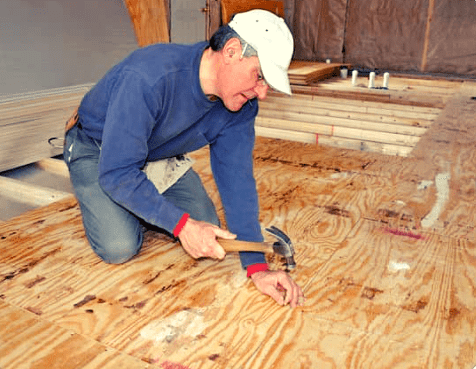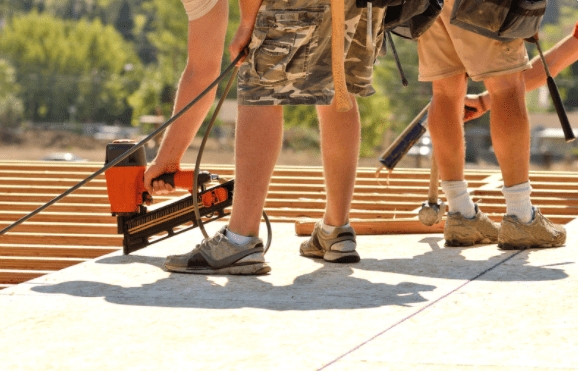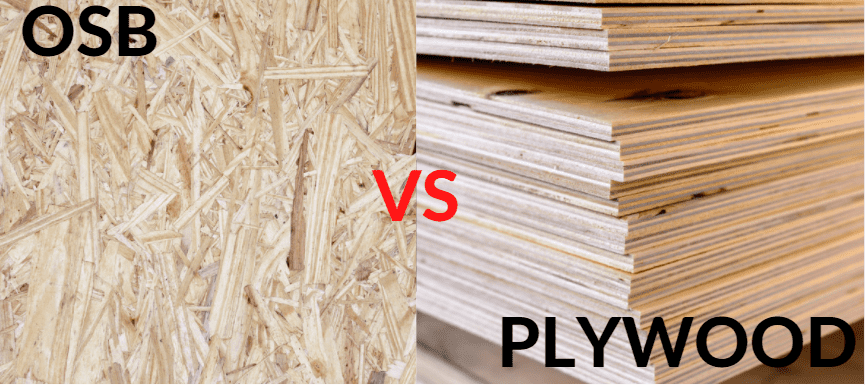
If you are remodeling a bathroom or planning your new home’s construction, you have likely thought about what subfloor material would be best in your bathroom. Of all of the rooms in your home, Bathroom’s will see the most water and experience the highest levels of humidity. As a result, bathroom subfloor will not always be the same as the subfloor used throughout the rest of your home.
Pressure treated 3/4″ plywood subfloor is the best subfloor material for bathrooms. Pressure treated plywood is water resistant and will withstand the humid, damp bathroom environment much better than untreated plywood or OSB.
Although pressure treated plywood is the best option, there are other subfloor materials that can be safely used in a bathroom. There are also some subfloor materials that should be avoided at all costs.
What is a Subfloor?

Before we can determine the best subfloor to use in a bathroom, we need to understand the purpose of subfloor in the first place. Subfloor is generally plywood or OSB and is installed directly on top of the joists in your home. Subfloor is needed to provide a solid, flat surface for your finished flooring to be installed on top of. 3/4 inch plywood is generally considered to be the most common type of subfloor, but the thickness of the plywood depends on your joist spacing. The further your joists are spaced from each other, the thicker your subfloor will need to be.
OSB VS Plywood

As mentioned above, OSB (oriented strand board) and plywood are the most common subfloor material choices. Each material has its own advantages and drawbacks. The Table below compares OSB to Plywood as it relates to suitability for use in a bathroom.
| Parameter | Oriented Strand Board (OSB) | Plywood |
| Constituents | Formed with wood strands and adhesives | Individual layers of wood glued together under high pressure |
| Cost | Less Expensive | More Expensive |
| Durability | Less Durable | More Durable |
| Water Resistance | Poor | Medium |
| Uniformity | High | Medium |
Additionally, plywood is stiffer than OSB by approximately 10%, making it a much better subfloor when tile will be installed on top of it. This is most common in bathrooms and kitchens. Although OSB has its place, Plywood is the clear winner for bathroom subfloor applications.
Pressure treated VS standard subfloor in the bathroom

Although plywood is superior to OSB for bathroom subfloor application, pressure treated plywood can offer additional protection. Pressure treated lumber is lumber that has been infused with chemical preservatives that make it considerably more durable, water resistant, rot resistant, and mold resistant than its non-treated counterpart. As a result, pressure treated subfloor is great choice for bathrooms. Although untreated plywood can still be used in bathrooms, it will have a much shorter lifetime than pressure treated lumber in the event that it becomes wet.
Based on research I have performed, untreated plywood can begin to show signs of rot and decay after only two years of continuous water exposure. Pressure treated lumber, however, has been reported to last anywhere from 20-40 years – even in harsh, wet environments.
To summarize, 3/4″ pressure treated plywood is the best bathroom subfloor due to its Superior stiffness, durability, and moisture resistance.
If you would like to see how I completed my full 1/2 bathroom to full bathroom renovation (including installation of the subfloor), Check out my time lapse video below:
Thanks so much for checking out ATImprovements! If you learned something from this project, you might also like these other DIY Projects:
How to cut cast iron pipe: How to Cut Cast Iron Pipe and Replace it with PVC – AT Improvements
How to Patch a Hole in Concrete Foundation: How to Patch a Hole in Concrete Foundation – (atimprovements.com)
Thanks!
DISCLAIMER: This is a reference guide only. Links included in this article might be affiliate links. If you purchase a product or service with the links that I provide I may receive a small commission. There is no additional charge to you! Thank you for supporting ATimprovements so I can continue to provide you with free content each week!
Thanks for watching!
